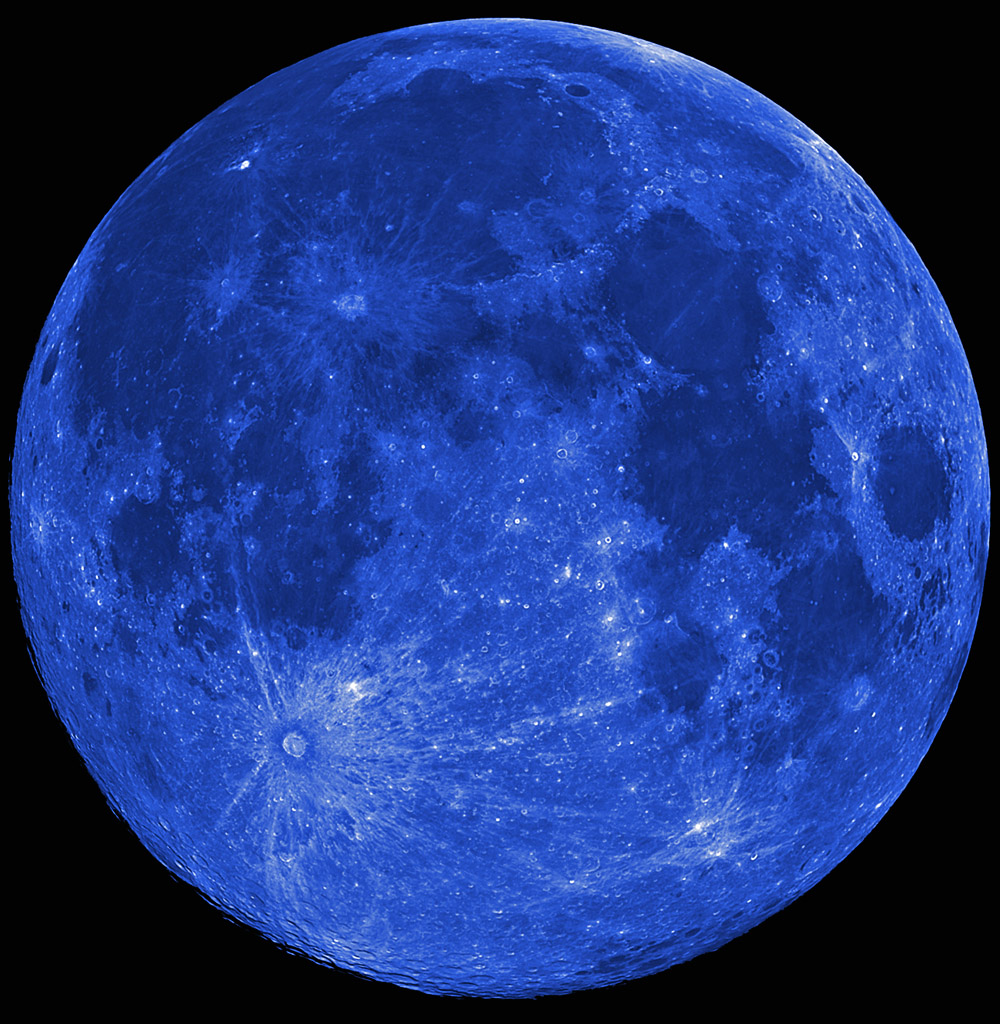Difference between revisions of "September 1, 2012"
(Created page with "__NOTOC__ =The Moon Isn't Blue= <!-- ws:start:WikiTextHeadingRule:0:<h1> --> <!-- ws:start:WikiTextLocalImageRule:6:<img src="/file/view/LPOD-Sep1-12.jpg/361...") |
(No difference)
|
Revision as of 18:08, 1 January 2015
The Moon Isn't Blue
image by George Ionas, New Zealand
I suppose it makes the Moon more interesting to a wider audience - in fact, it was mentioned on the national nightly news tonight - but calling the second full Moon of a month a Blue Moon is too cute for me. The Moon isn't blue, it is nearly white or when near the horizon, yellow to orange. If it were blue it would be even harder to see during a scattered sunlight day, and might be less bright at night, a disservice to night fishermen and burglars. But it might also make fresh impact craters and rays stand out more conspicuously, and might have led to this question much sooner: Why are there no really bright crater rims or rays on the maria? Look everywhere, but especially where Tycho's rays pass from the highlands onto Mare Nubium. So is this why Copernicus' rays are not as bright as Tycho's? Does anorthosite composition have less to do with ray brightness than we thought?
Chuck Wood
Technical Details
Aug 31, 2012. Williams Optics 102ED f/7 ED Doublet refractor, DMK51 video camera, stacked in Registax, wavelets only and two images were mosaicked using ICE.
(Disclaimer: George is not responsible for this image's coloration.)
COMMENTS?
Click on this icon File:PostIcon.jpg at the upper right to post a comment.




